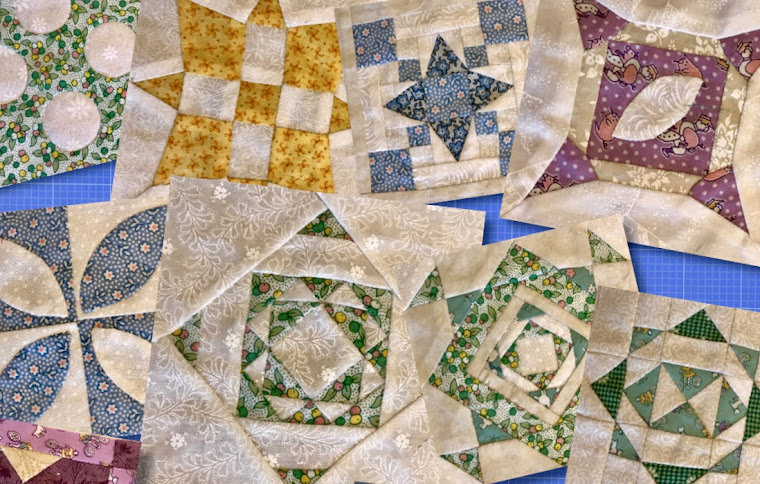I love hand piecing. Most quilters today can't be bothered with this. Quilters want machine piecing. I piece by machine, but for me hand piecing is so much more relaxing, enjoyable, accurate, social, and gives me a feeling of accomplishment. Machine piecing is not always quicker. It can be, but I crave accuracy. This leads me to un-sewing and re-sewing, until I have perfect blocks. After years of practice in hand piecing, I finish quick enough, and rarely need to un-sew and re-sew. And, even though I hand piece, I'm a thoroughly modern quilter.
When I like a pattern, I approach it as a hand piecer. I've been doing this for years. I used this approach with Kaye England's book, Voices of the Past: A History of Women's Lives in Patchwork, Volumn II. I came across this book some time in the mid 90's and later took weekly classes to construct the blocks. I decided to hand piece.
 |
| Louisa May Alcott block |
at hand piecing. I took Kaye England's block and reconstructed with EQ. Then I was on EQ4, I think....you all probably know EQ is a computer program used to create quilts. They are now up to EQ7. Using EQ for templates, I printed each piece and drew my own sewing lines. I made 12 blocks that I'm not too happy with. This was before Linda Franz came up with Inklingo. I wonder what these blocks would look like if I redid them with Inklingo? Printing pieces with sewing lines and registration marks already there makes piecing, whether by hand or machine, so much easier. I still use EQ to create my quilts, but my pieces come from Inklingo.
Now that I've discovered the ease of Inklingo, I just want to covert all blocks and quilts I make using this method. I'm currently in a group at a local quilt shop - the Prairie Women's Sewing Circle Club which follows along in a book of the same name, created by Pam Buda Heartspun Quilts. Each month, we create a small quilt. The instructions are for rotary cutting. The quilts I do, I'm hand piecing, so I'm using Inklingo for my pieces.
I imagine prairie women used templates to create their pieces. They traced on fabric and carefully cut out with scissors. They used needle and thread to piece their blocks and quilts by hand. I'm fortunate to be in a world where I have so many tools to expand my hand piecing experience. With the use of Inklingo, I print my pieces on the computer. I use my computer EQ program to create my quilts. I'm a thoroughly modern quilter. Past and present have joined.

















